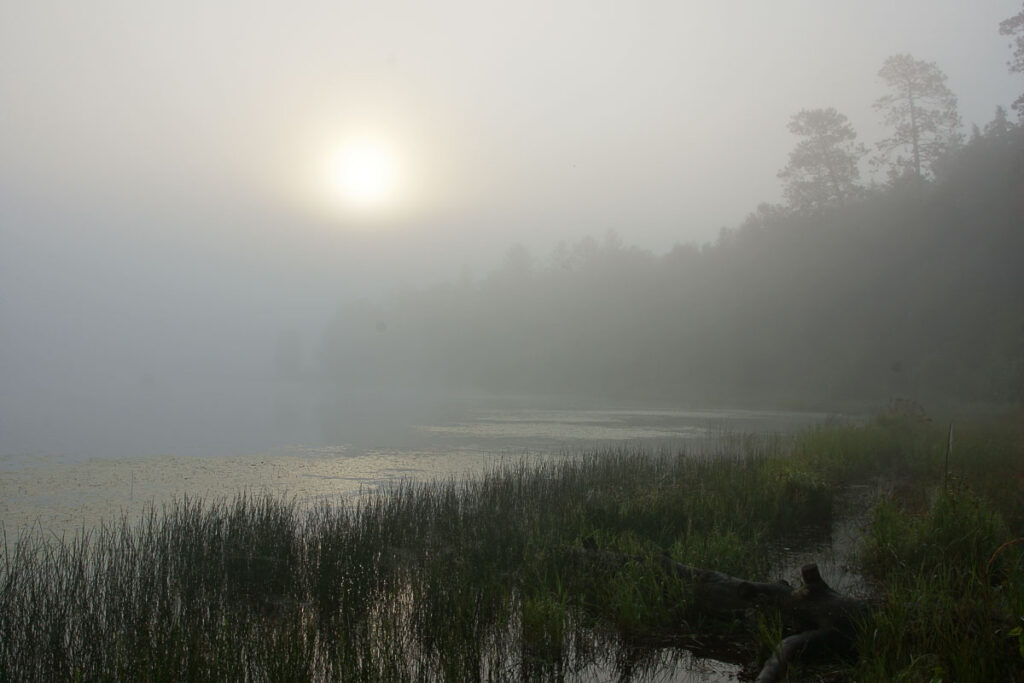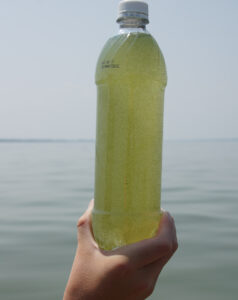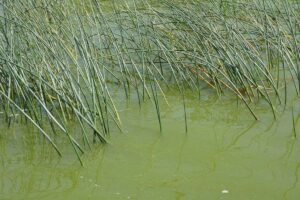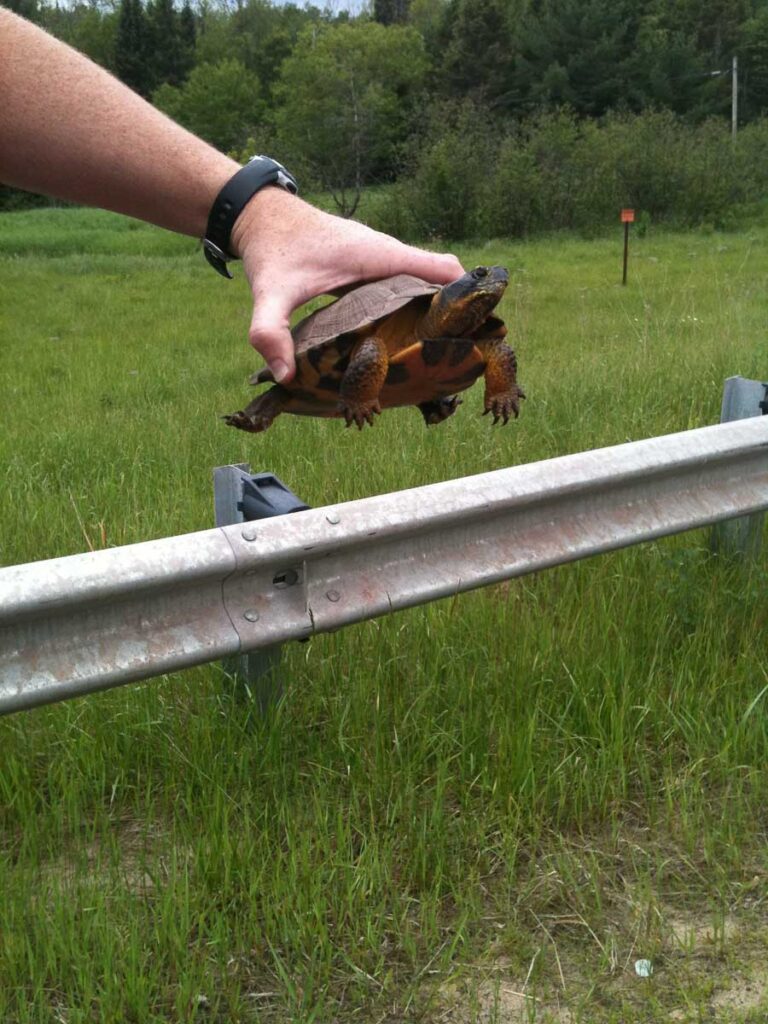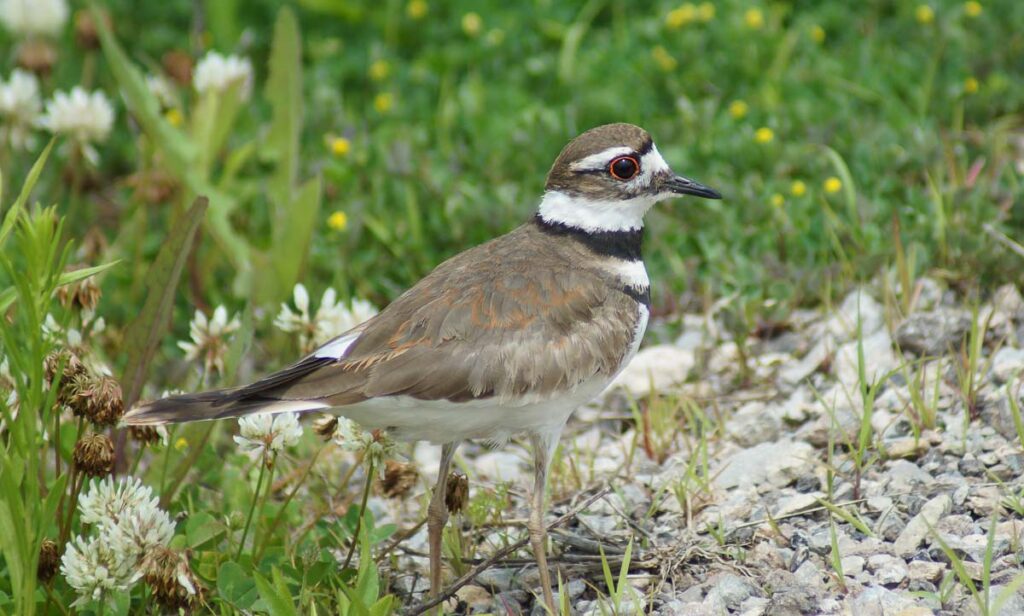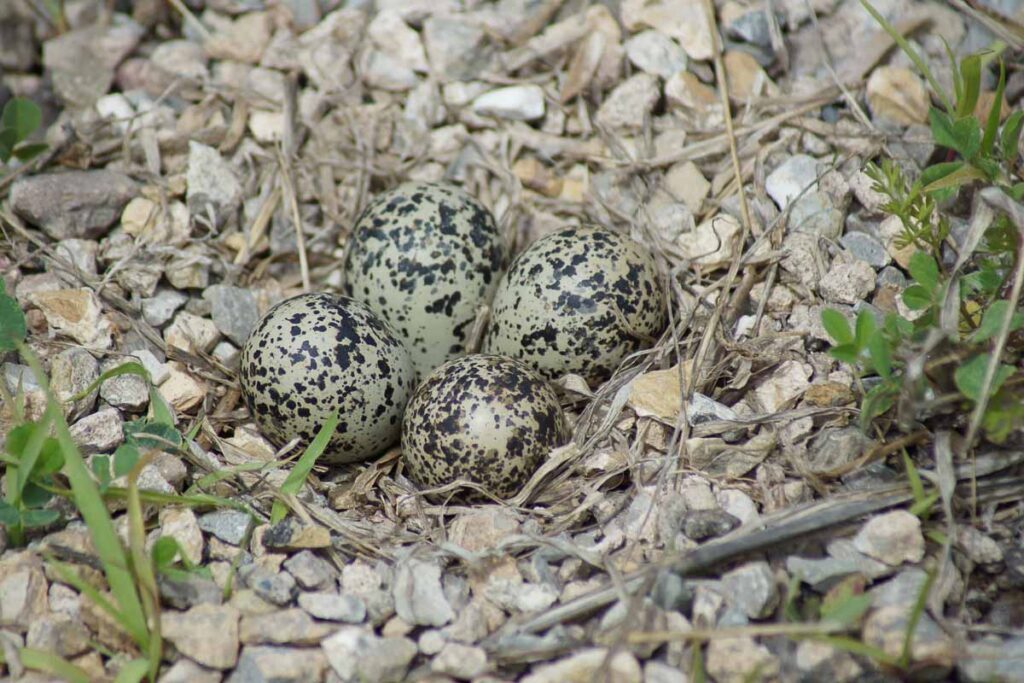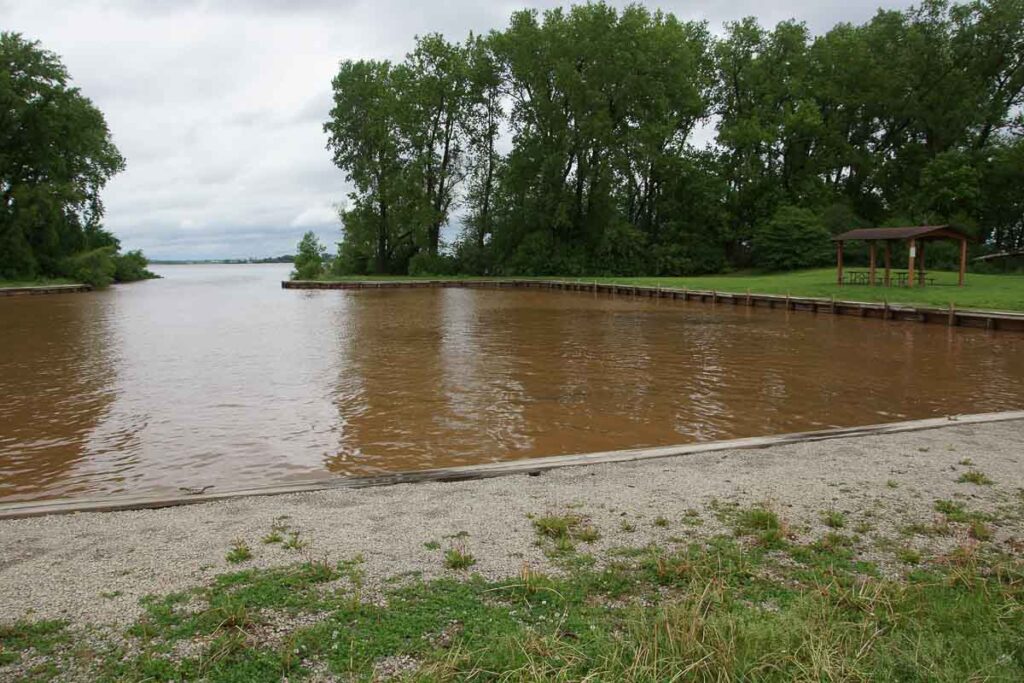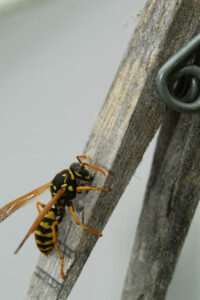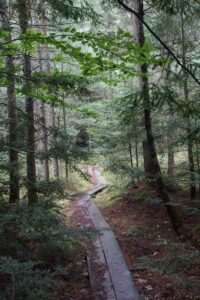
Wetlands can be difficult to travel in. Wet, soggy ground requires proper footwear in order to stay dry. Rubber boots are great in a wetland, or on dewy ground, but on a long hike, they quickly become hot, sweaty, and uncomfortable. The soggy ground can also suck feet in making your movements tedious and arduous. Wetlands however are great places to explore. Many unique plants and animals reside in marshes and swamps and nowhere else. Even more common species often use wetlands for feeding or taking shelter, not to mention some require them if only briefly, to complete their life-cycle.
Sometimes elaborate boardwalks with bridges and lookout towers and decks are put up to allow nature lovers better access, but sometimes all that is needed are a few simple boards. I was up in the Nicholet-Chewamegon National Forest recently and came to this short boardwalk that cuts across a tamarack bog. It is utilitarian, designed only to get the hiker over the wetland while staying dry. However short, it allows great access to a moss-covered world under the feathery soft needles of tamarack trees. I paused to take photos of many kinds of plants, cranberries, Indian pipe, and sphagnum mosses, and to just stand in the stillness for a while.

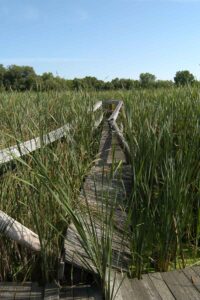
Boardwalks can be very difficult and expensive to construct. There is always the issue of the walk sinking down into the muck whether the boards are simply placed on the ground or pilings were driven into it. The constant contact with water encourages rot, and wooden materials have to be replaced frequently or chemically treated to slow the process of decay. In some climates, boardwalks have to deal with heaving caused by the formation and melting of frost.
Despite the difficulties of construction and expense, I hope more nature centers, parks, etc. construct these gateways into wetlands. We need more appreciation of wetlands, so people will fight to protect and manage these wonderful places.

